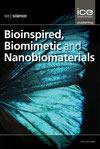The in situ potential of synthetic nano-hydroxyapatite for tooth enamel repair
IF 0.6
4区 工程技术
Q4 ENGINEERING, BIOMEDICAL
引用次数: 0
Abstract
This study was designed to evaluate whether nano-hydroxyapatite toothpastes with or without fluoride would be more advantageous than a fluoride toothpaste in the repair of eroded enamel in situ. Twenty-one subjects participated in this single-blind, randomized, cross-over design study with three 7-day treatment phases. In each phase, the subjects wearing a palatal appliance containing five sterilized enamel specimens used either one of the two test regimens (1% nano-hydroxyapatite toothpaste and 2.25% nano-hydroxyapatite/1450 parts per million (ppm) fluoride toothpaste) or one control (1400 ppm fluoride toothpaste). Enamel specimens were extraorally demineralized (4 × 5 min/day) and were intraorally treated with the toothpastes (2 × 2 min/day). The nano-hydroxyapatite toothpaste groups exhibited significantly higher surface microhardness than did the standard fluoride toothpaste group (p < 0.05). Enamel surface hardness was increased only by nano-hydroxyapatite toothpastes after in situ treatment compared with the baseline (p < 0.05). Morphological analysis demonstrated an apatite-type crystal deposition on the eroded enamel surface produced by nano-hydroxyapatite toothpastes, while fluoride toothpaste failed to show any significant surface deposition. Chemical analysis showed a higher content of calcium and phosphorus in the enamel surface treated with nano-hydroxyapatite toothpastes compared with that in the control one (p < 0.05). It is concluded that home use of nano-hydroxyapatite containing toothpastes may have a protective effect against erosion at the enamel surface.合成纳米羟基磷灰石用于牙釉质修复的原位电位
本研究旨在评估含氟或不含氟纳米羟基磷灰石牙膏在原位修复侵蚀牙釉质方面是否比含氟牙膏更有利。21名受试者参加了这项单盲、随机、交叉设计的研究,共有3个为期7天的治疗阶段。在每个阶段,受试者佩戴一个装有5个灭菌牙釉质标本的腭器,使用两种测试方案中的一种(1%纳米羟基磷灰石牙膏和2.25%纳米羟基磷灰石/1450 ppm氟牙膏)或一种对照(1400ppm氟牙膏)。牙釉质标本经口外脱矿(4 × 5 min/d),用牙膏口内处理(2 × 2 min/d)。纳米羟基磷灰石牙膏组的表面显微硬度明显高于标准氟化物牙膏组(p <0.05)。与基线相比,原位处理后仅纳米羟基磷灰石牙膏可提高牙釉质表面硬度(p <0.05)。形态学分析表明,纳米羟基磷灰石牙膏在被侵蚀的牙釉质表面有磷灰石型晶体沉积,而含氟牙膏没有明显的表面沉积。化学分析表明,纳米羟基磷灰石牙膏处理后的牙釉质表面钙和磷含量高于对照组(p <0.05)。结论:在家中使用含纳米羟基磷灰石的牙膏可能对牙釉质表面的侵蚀有保护作用。
本文章由计算机程序翻译,如有差异,请以英文原文为准。
求助全文
约1分钟内获得全文
求助全文
来源期刊

Bioinspired Biomimetic and Nanobiomaterials
ENGINEERING, BIOMEDICAL-MATERIALS SCIENCE, BIOMATERIALS
CiteScore
2.20
自引率
0.00%
发文量
12
期刊介绍:
Bioinspired, biomimetic and nanobiomaterials are emerging as the most promising area of research within the area of biological materials science and engineering. The technological significance of this area is immense for applications as diverse as tissue engineering and drug delivery biosystems to biomimicked sensors and optical devices.
Bioinspired, Biomimetic and Nanobiomaterials provides a unique scholarly forum for discussion and reporting of structure sensitive functional properties of nature inspired materials.
 求助内容:
求助内容: 应助结果提醒方式:
应助结果提醒方式:


